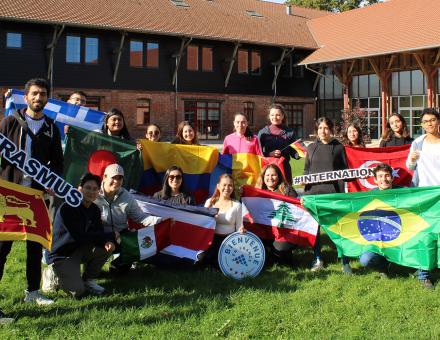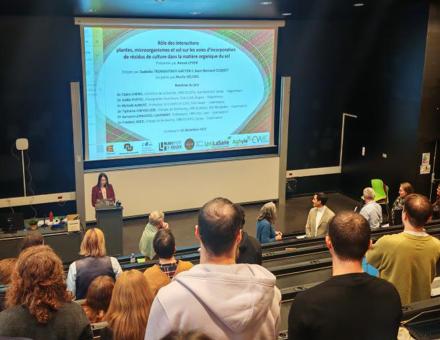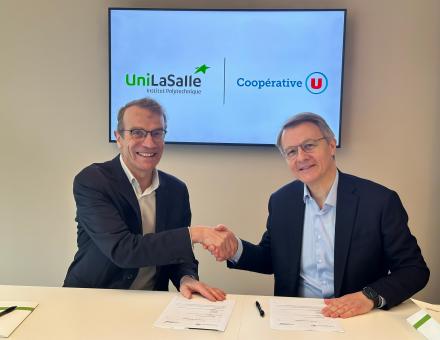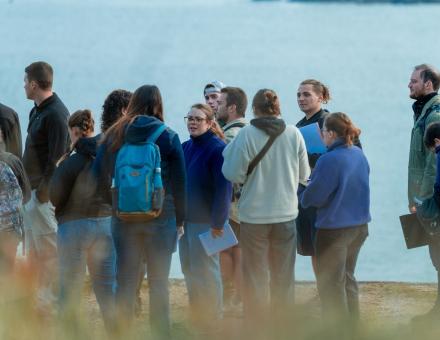In response to a request from the town of Beauvais, UniLaSalle's Health College took part in the Beauvais edition of the Parcours du cœur, which took place on Sunday April 7 at the Plan d'eau du Canada.
This nationwide event, organized by the French Federation of Cardiology and held in numerous French cities, raises public awareness of cardiovascular disease, its risk factors, consequences and prevention.
The Institut Polytechnique UniLaSalle has leveraged its expertise in the field of food and health by devising a question-and-answer game on cardiovascular disease, accompanied by an information leaflet, with a particular focus on the role of diet and nutrition in the onset of these diseases.
Three 4th-year students in Agro Food & Health, Léa Suty, Bélinda Posvite and Eva Bazin, were entrusted with the implementation of this animation, as part of their "Prevention and health education" career path project. This practical experience enables them to put their knowledge into practice in the field.
"The Collège Santé wanted to develop new health prevention activities and tools aimed at the general public," explains Claire Duga, a research engineer in Food, Catering and Health and the project's tutor along with Anne-Kathrin Illner, a teacher-researcher in Human Nutrition and Prevention & Population Health. "The students were free to choose their themes and format. When it came to content, however, their choices had to be based on scientific criteria".
An educational project as much as a preventive health initiative
The activity devised by Léa, Bélinda and Eva consists of a card game with questions and answers on understanding cardiovascular disease, encouraging discussion. "The central idea is to inform, raise awareness and prevent cardiovascular disease by encouraging discussion within families. The main focus was on the role of food and nutrition, because that's our field of training," explains Léa. "The public leaves the event with a booklet summarizing the information contained in the game."
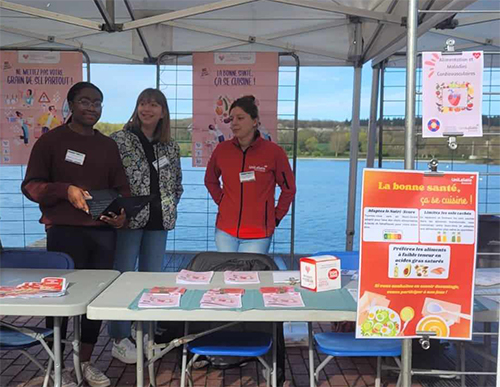
For the three students, this project was an opportunity to apply the concepts they had learned in class, and to see for themselves whether the animation they had created from start to finish was working well with the general public. "We saw quite a few people. The exchanges and feedback we've had from users will enable us to enrich and improve the game, so as to offer a truly accomplished product at the end of the project", says Eva.
Above all, the full-scale exercise forced them to think long and hard about the format. "It took us a month to determine which type of game would be best suited to each problem and each audience," confides Léa. "We realized that creating a game is a fairly complex process, requiring a lot of work for just a few minutes of animation. We adapted the questions around the themes we felt were most relevant to an audience of elderly people and to a region like Oise. We then mobilized our knowledge and carried out bibliographical research to ensure that the maps were as complete and accurate as possible. Claire Duga and Anne-Kathrin Illner assisted the students in all these stages.
According to the students, the most difficult part of the project was popularizing their scientific knowledge. "It's a lot more complicated than you'd think," says Bélinda, who nevertheless enjoyed the exercise. "You have to adapt the vocabulary so that the message is understood by everyone, and we sometimes had to avoid certain words that might have too negative a connotation. I really enjoyed learning how to popularize science and put together a communication medium on a preventive health theme. I had to be creative, make the right choice of colors and shapes, fine-tune the details, work on readability... It's all very stimulating!"
Next step for our three students: to extend the game to two other themes linked to undernutrition and dehydration, and to create a "wheel of fortune" to make the game even more attractive to the public.
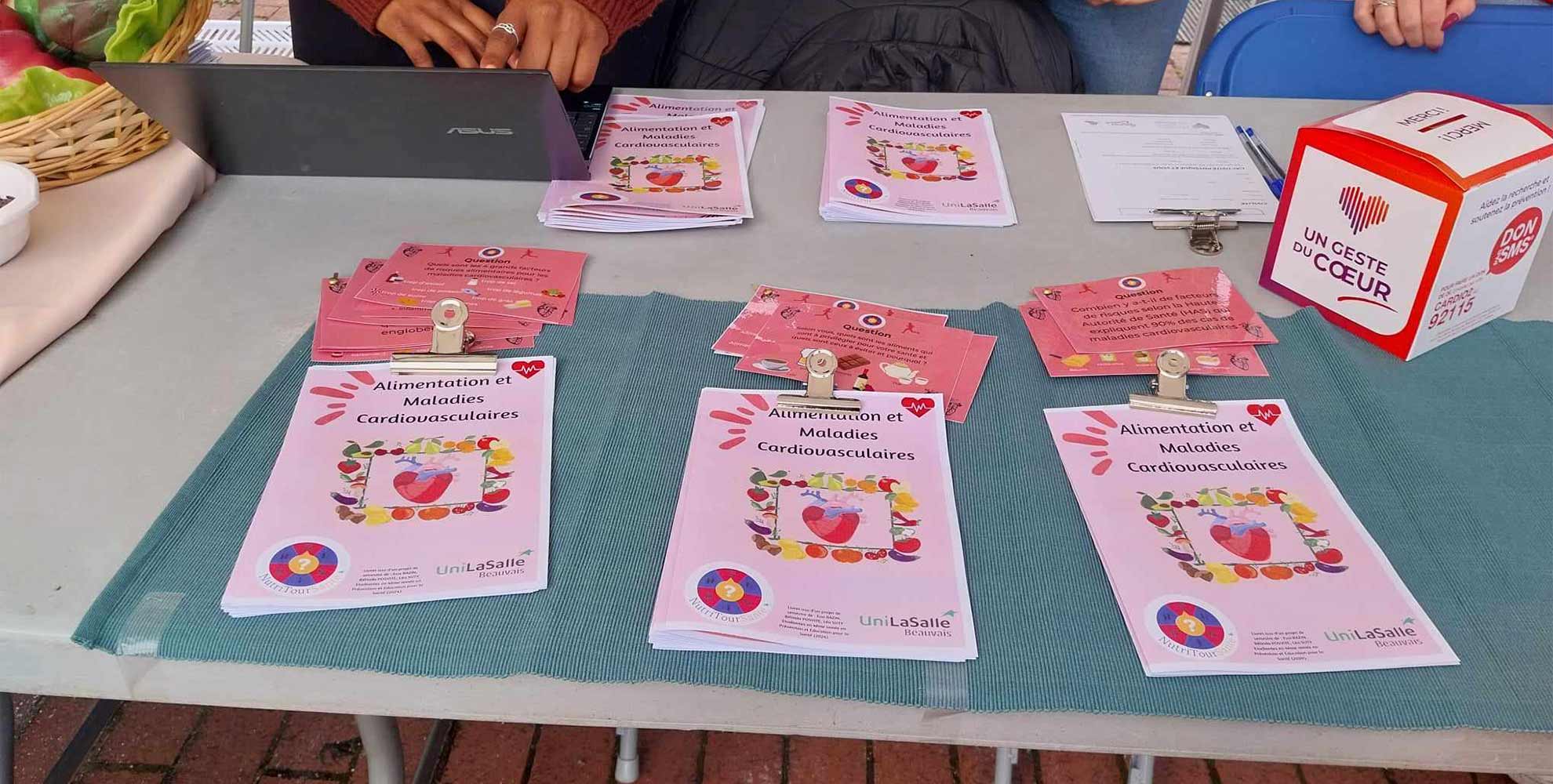
Choosing the right food with Nutriscore
Another activity was offered to passers-by at the UniLaSalle stand, as part of the Parcours du cœur. Lucie Lebrun, a student-engineer in her 5th year of Agro Food & Health also in the Prevention and Health Education program, developed a game around the Nutriscore as part of her end-of-studies internship at the Collège Santé. The aim was to get students to guess the Nutriscore rating of various food products, based on the nutritional information given on the packaging and the list of ingredients. The aim is to give consumers a few keys to help them make the right food choices, while enjoying themselves at the same time.
A career path dedicated to preventive healthcare
The project carried out by Léa, Bélinda and Eva is part of their Prevention and Health Education career path, part of the Agro Food and Health engineering program. The aim of this pathway is to respond to the new challenges posed by food and its impact on health, through preventive actions and health education, as well as to understand and act on food safety, particularly in catering.
The courses in nutrition, epidemiology and pathophysiology of chronic diseases developed in this pathway enable students to acquire solid skills in :
- carry out nutritional audits and territorial diagnoses on the state of health of populations,
- include diet in therapeutic management,
- propose health promotion and education tools,
- develop innovative communication strategies.
The importance of practical application in the teaching provided at UniLaSalle is reflected in group work that combines the knowledge acquired in class with project management and team management skills. The project carried out as part of the Prevention and Health Education course covered a wide range of health education topics. Balanced diets for people with disabilities, culinary training for families with young children, culinary adaptations for cancer patients and nutrition for athletes are just some of the topics addressed by the students this year.
More information about Prevention and health Education career path



